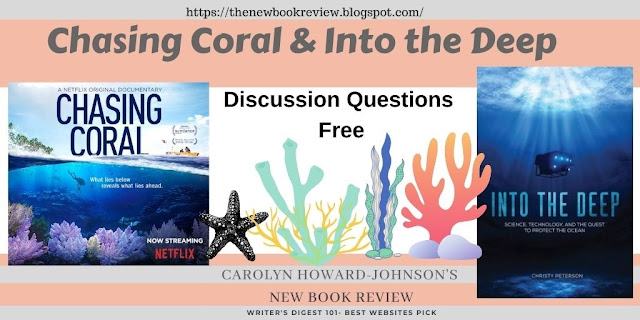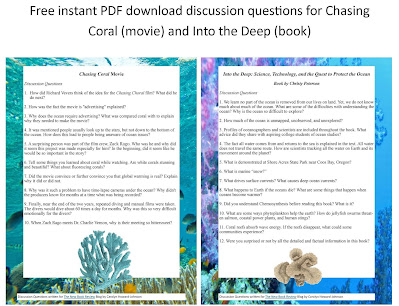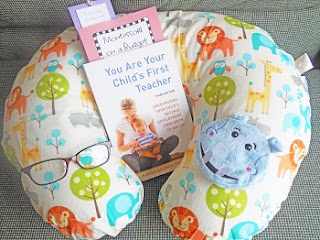Chasing Coral Movie and Into the Deep Book Discussion Questions
Everything on planet Earth is connected to every other living thing. Both the movie and the book present alarming information about the decline of the ocean we need to understand. The ocean is a moderator of temperature and carbon. Without it, temperatures would be rising even more quickly. The film presents visual images to help us comprehend the magnitude of the issues. The book provides detailed, factual, comprehensive, decades-long studies and current research to counter the fact global warming now is a natural phenomenon. Yes, the Earth has warmed before, but it was over many thousands of years. This time it has been happening for about 200 years, more since World War II. Recovery would take thousands of years. It is time to act. Watch the movie. Read the book and see if you agree.
*Note: The film and book are entirely separate, and I paired them for a more complete understanding of the problems the ocean is facing.
Free instant download PDF with the discussion questions (click this link to open the PDF)
Chasing Coral Movie
Note: I found the film on Netflix as it is a Netflix original movie.
Chasing Coral is one of the six films suggest by Al Gore's Climate Reality Leadership Corps, and a movie trailer is available at the link.
Discussion Questions
1. How did Richard Vevers think of the idea for the Chasing Choral film? What did he do next?
2. How was the fact the movie is "advertising" explained?
3. Why does the ocean require advertising? What was compared coral with to explain why they needed to make the movie?
4. It was mentioned people usually look up to the stars, but not down to the bottom of the ocean. How does this lead to people being unaware of ocean issues?
5. A surprising person was part of the film crew, Zack Rago. Who was he and why did it seem this project was made especially for him? In the beginning, did it seem like he would be so important in the story?
6. Tell some things you learned about coral while watching. Are white corals stunning and beautiful? What about fluorescing corals?
7. Did the movie convince or further convince you that global warming is real? Explain why it did or did not.
8. Why was it such a problem to have time-lapse cameras under the ocean? Why didn't the producers know for months at a time what was being recorded?
9. Finally, near the end of the two years, repeated diving and manual films were taken. The divers would dive about 60 times a day for months. Why was this so very difficult emotionally for the divers?
10. When Zach Rago meets Dr. Charlie Vernon, why is their meeting so bittersweet?
Into the Deep: Science, Technology, and the Quest to
Protect the Ocean
Book by Christy Peterson
Title:
Into the Deep: Science, Technology, and the Quest to
Protect the Ocean
Author: Christy Peterson
Publisher: Twenty-First
Century Books ™ (Lerner Publishing)
Publisher Address: Lerner Publishing Group, Inc.
241 First Avenue North
Minneapolis, MN 55401
Publisher Website Address: https://lernerbooks.com/Pages/Our-Imprints
Publisher Email Address: custserve@lernerbooks.com
ISBN-13: 978-1541555556
ISBN-10: 1541555554
ASIN: B081H5L6VJ
Price
$19.05 Library Binding, $9.99 Kindle
Page Count: 152 pages
Formats: (Library Binding, Kindle)
Discussion Questions
1. We learn no part of the ocean is removed from our lives on land. Yet, we do not know much about much of the ocean. What are some of the difficulties with understanding the ocean? Why is the ocean so difficult to explore?
2. How much of the ocean is unmapped, unobserved, and unexplored?
3. Profiles of oceanographers and scientists are included throughout the book. What advice did they share with aspiring college students of ocean studies?
4. The fact all water comes from and returns to the sea is explained in the text. All water does not travel the same route. How are scientists tracking all the water on Earth and its movement around the planet?
5. What is demonstrated at Shore Acres State Park near Coos Bay, Oregon?
6. What is marine “snow?”
7. What drives surface currents? What causes deep ocean currents?
8. What happens to Earth if the oceans die? What are some things that happen when oceans become warmer?
9. Did you understand Chemosynthesis before reading this book? What is it?
10. What are some ways phytoplankton help the earth? How do jellyfish swarms threaten salmon, coastal power plants, and human stings?
11. Coral reefs absorb wave energy. If the reefs disappear, what could some communities experience?
12. Were you surprised or not by all the detailed and factual information in this book?
Thank you for reading, Carolyn Wilhelm












